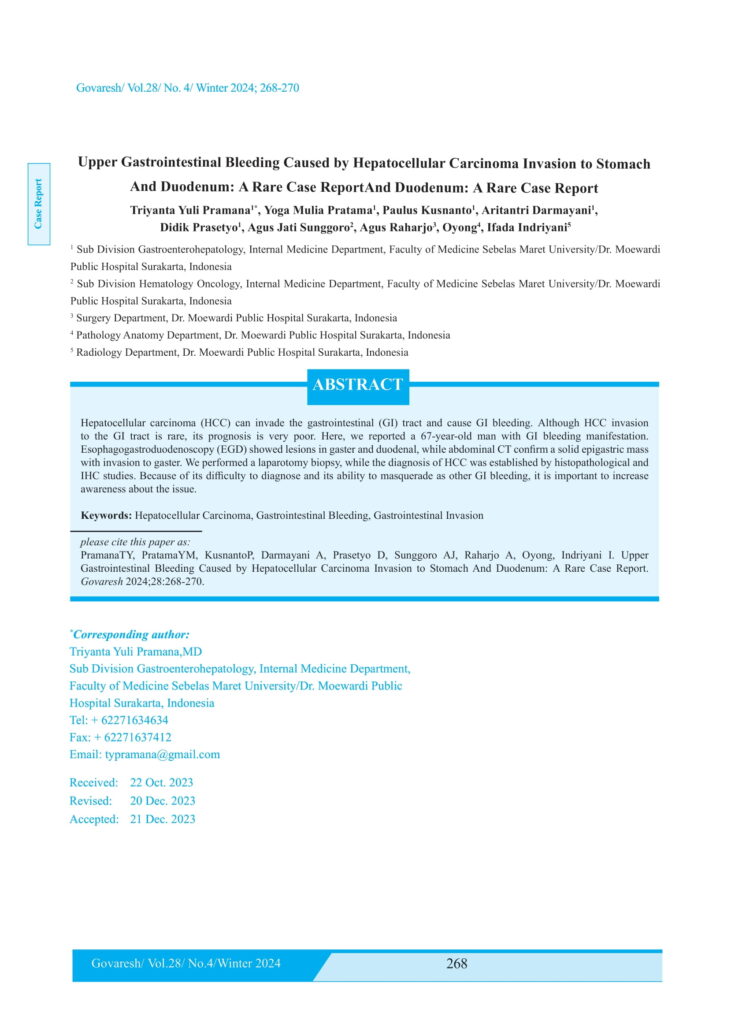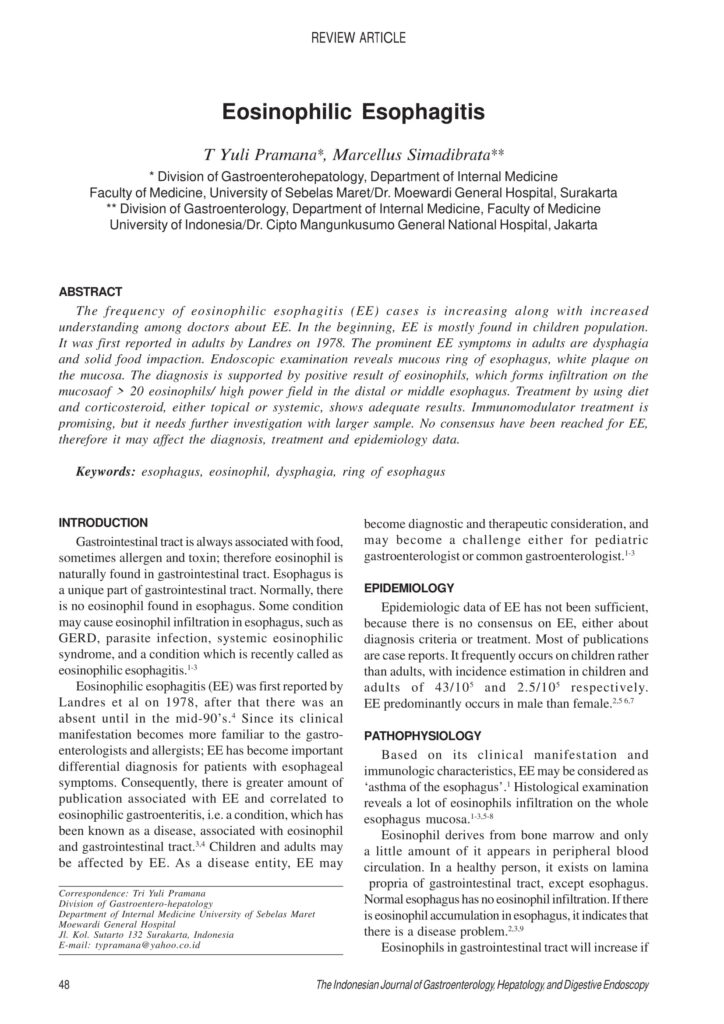

Celiac disease (CD) is an autoimmune disease of the small intestine triggered by the consumption of gluten-containing foods in individuals with a genetic predisposition. CD was a rare disease until 20 years ago, when the prevalence increased.

Hepatocellular carcinoma (HCC) can invade the gastrointestinal (GI) tract and cause GI bleeding. Although HCC invasion to the GI tract is rare, its prognosis is very poor. Here, we reported a 67-year-old man with GI bleeding manifestation. Esophagogastroduodenoscopy (EGD) showed lesions in gaster and duodenal, while abdominal CT confirm a solid epigastric mass with invasion to gaster.

Gastric hemangioma (GH) is a rare benign tumor that may cause to upper gastrointestinal bleeding. Furthermore, this condition could lead life-threatening conditions thus should be recognized sooner to minimize unnecessary invasive surgical intervention, and accident.

Dyspepsia still becomes a major challenge in upper gastrointestinal disease in Indonesia. This disease often correlated with Helicobacter pylori infection. However, the prevalence of this bacterium is generally low in Indonesia.

A high incidence of tuberculosis (TB), especially in endemic countries, makes this infectious disease a concern. Abdominal TB contributes to 10% of extrapulmonary TB. Due to nonspecific clinical, radiological, and endoscopic findings, diagnosing abdominal TB continues to be a challenge.

Gastric antral vascular ectasia (GAVE) is a rare but severe cause of gastrointestinal (GI) bleeding in the elderly, meanwhile, it is commonly associated with connective tissue diseases. The GAVE diagnosis is clinically challenging due to its little-known characteristic symptoms and limited case studies.

COVID-19 is a disease of a thousand faces, with varied clinical characteristics, ranging from mild to severe or critical degrees. This study purposed to identify COVID-19 clinical characteristics, disease severity and mortality rates of patients admitted to UNS Hospital.

Pancreatic and peripancreatic tuberculosis is a rare abdominal tuberculosis. Diagnosis for pancreatic tuberculosis can be challenging. Conventional imaging tools may show mass or malignancy in the pancreas.

Pancreatic cancer is difficult to diagnose in early stage. Malignant bile duct obstruction is a severecomplication of pancreatic cancer, which can lead to poor outcomes including cholangitis, delayed treatment, reduced quality of life, and increased mortality.

The frequency of eosinophilic esophagitis (EE) cases is increasing along with increased understanding among doctors about EE. In the beginning, EE is mostly found in children population. It was first reported in adults by Landres on 1978.

Acute cholangitis (AC) is a biliary tract infection with in-hospital mortality rates reaching up to 14.7%. The underlying condition is biliary obstruction caused by benign and malignant etiologies, as well as bacteriobilia, with commom bile duct (CBD) stone being one of the most common causes.

The goal of this study was to determine the prevalence of gastrointestinal manifestations in coronavirus disease 2019 (COVID-19) and to show the identification of potential connections between gastrointestinal manifestations and outcomes.

Glaucoma is a heterogeneous group of optic neuropathies characterized by a progressive loss of retinal ganglion cells (RGCs) with corresponding visual field defects, and one of the main risk factors is elevated intraocular pressure (IOP).

Colorectal cancer (CRC) is reported as the third most frequently diagnosed cancer worldwide. Salmonella infection plays a role in developing this cancer, which is chronically related to the avirulence protein A (AvrA) effector protein produced by the bacteria.
Apartemen Menteng Square Tower AR06
Jl. Matraman Raya No. 30E Jakarta 10430 Indonesia
Telp: +62-21-29614303
Fax: +62-21-23951145
Whatsapp: +62-857-1002-5559
Email: pbpgi.jakarta@gmail.com